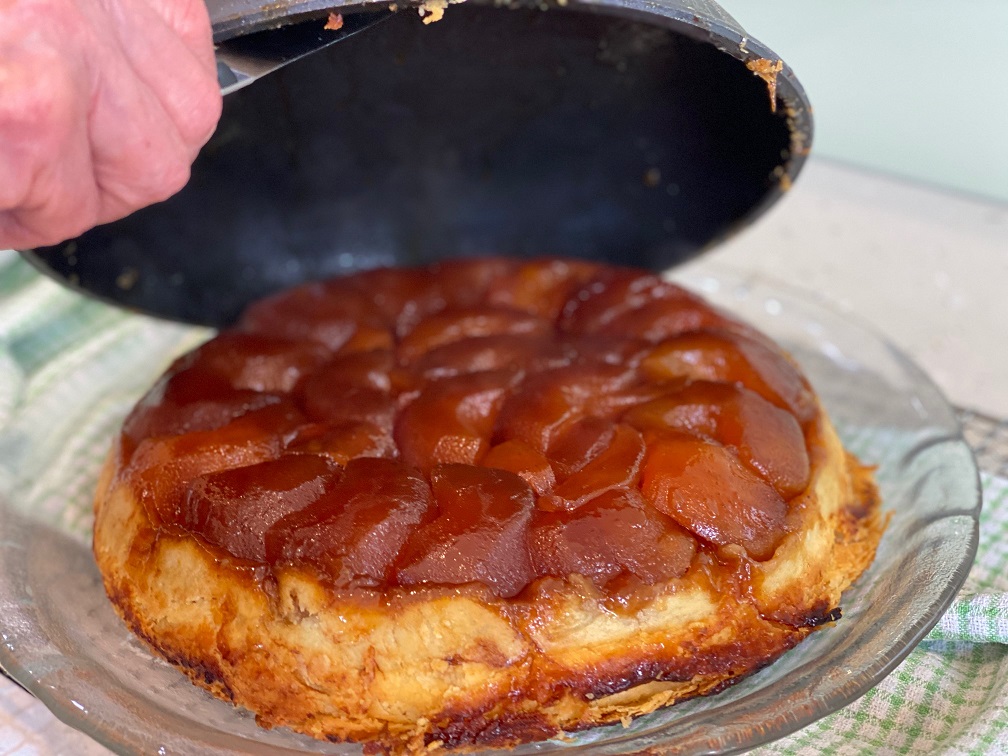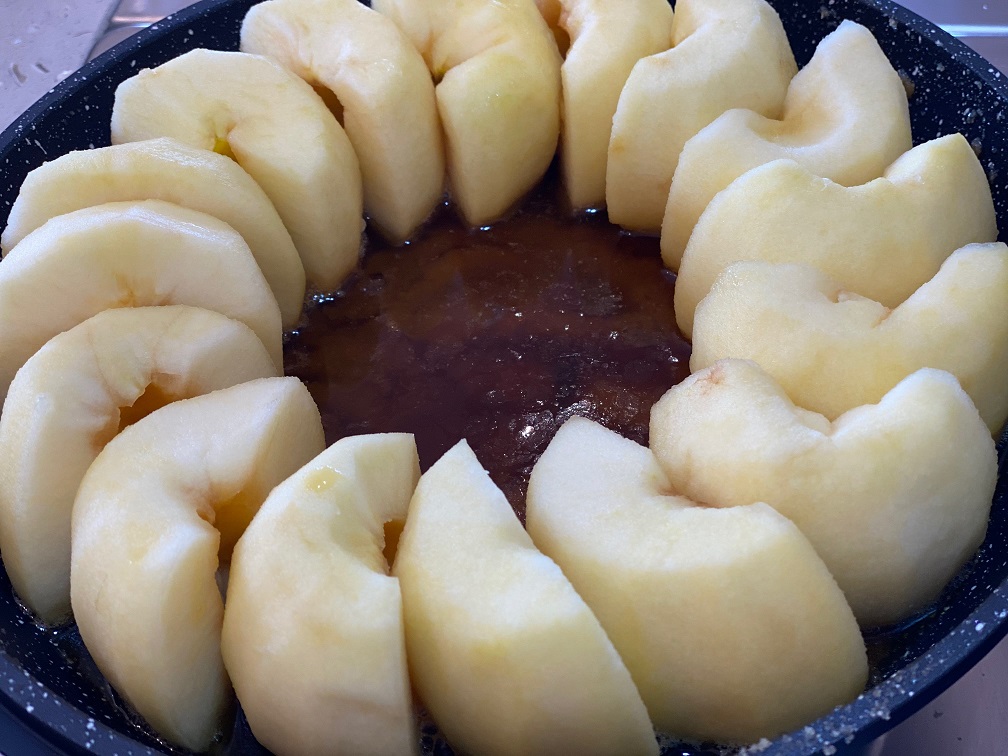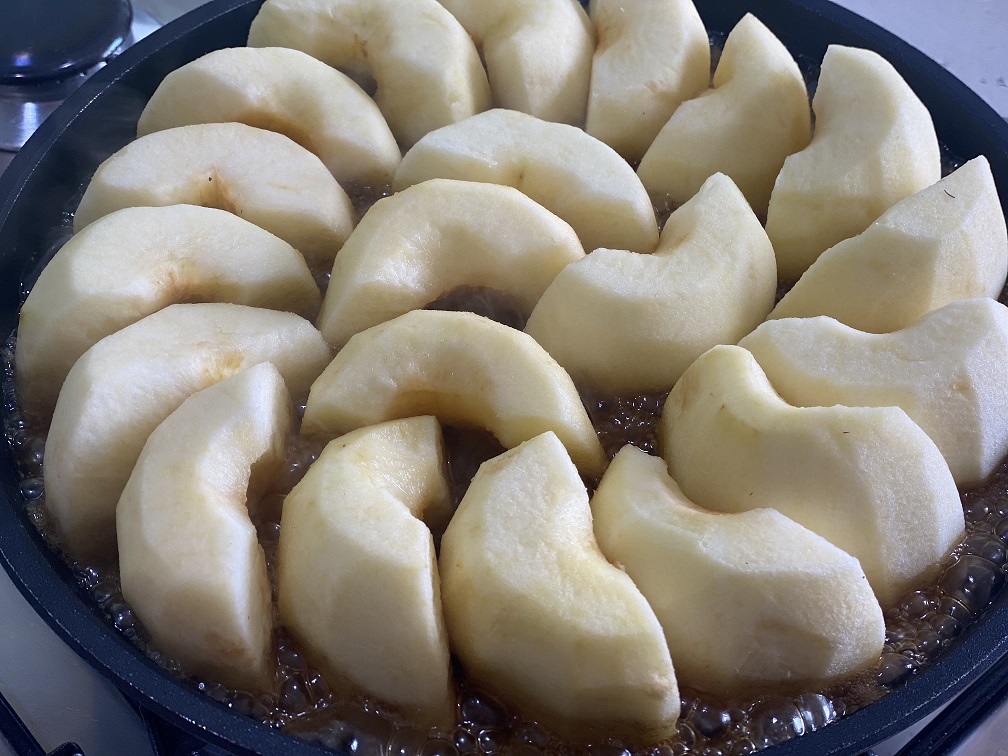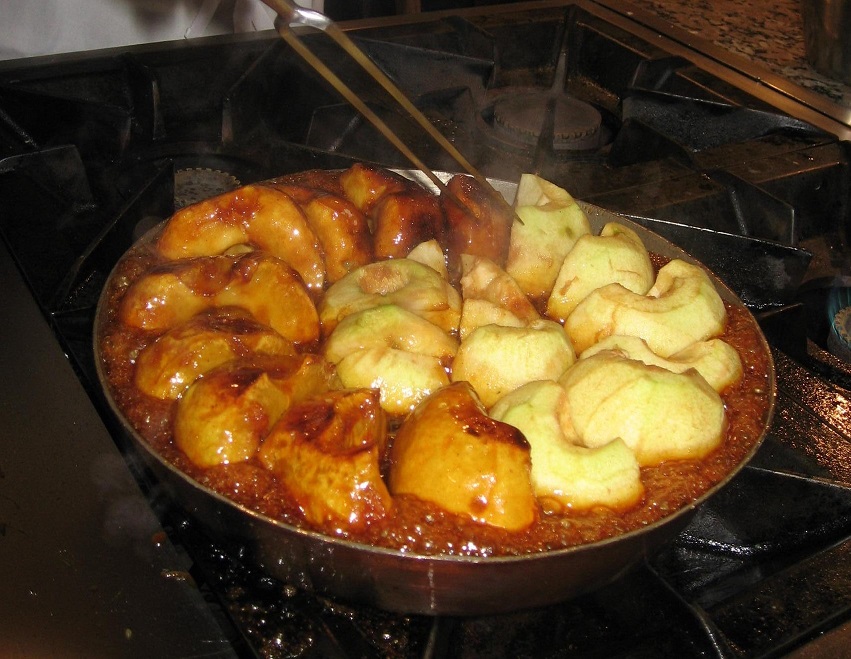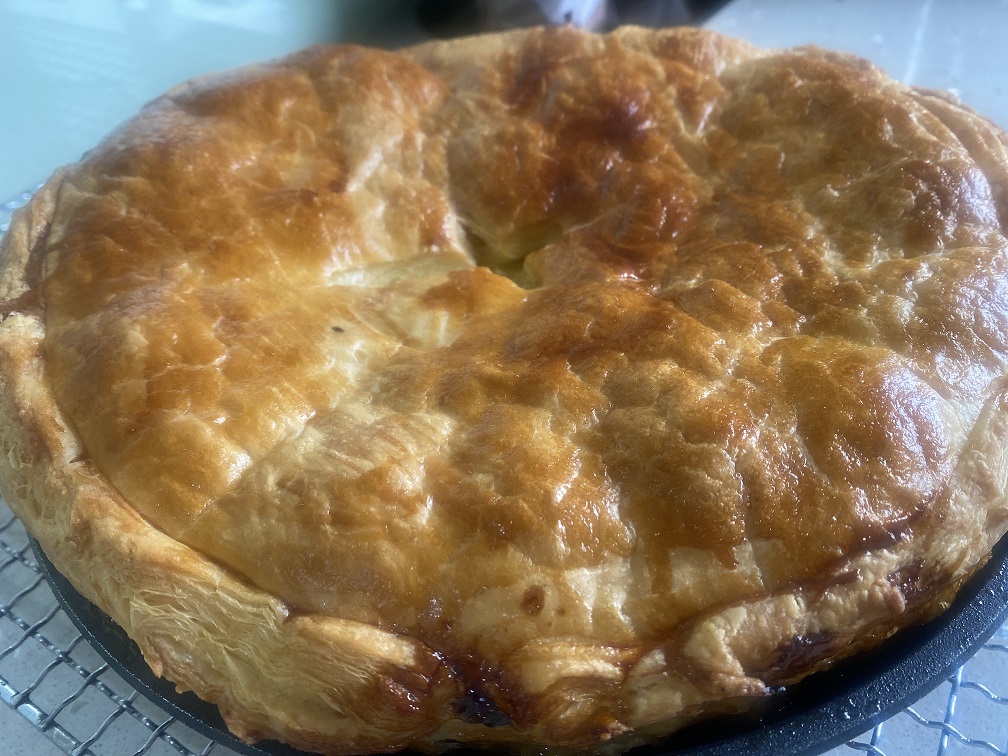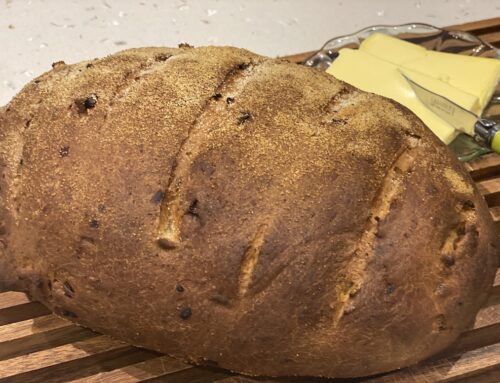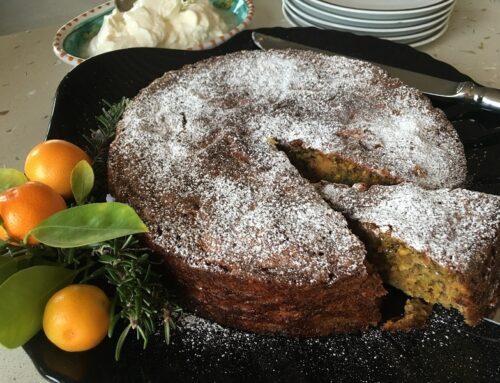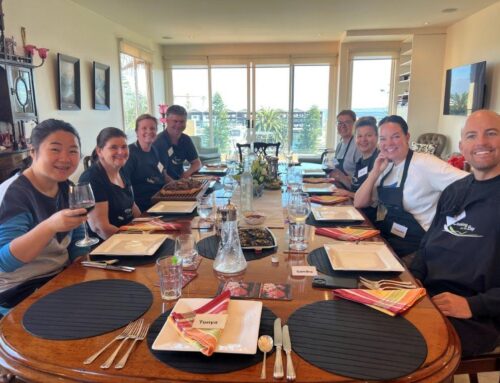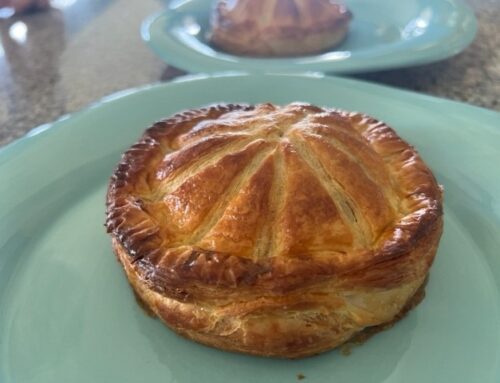Years ago, in 2007, I attended La Varenne Cooking School in Burgundy, and one of the many dishes we cooked there with the chefs was the classic Tarte Tatin. The class was held in one of the beautiful kitchens of the Chateau du Fëy, the home of La Varenne Cooking School and its founder, Anne Willan. All the kitchens were on the ground floor of the chateau and overlooked the glorious front gardens, the entrance gate, the circular gravel driveway, and the central water fountain, with the other wings of the château wrapped around.
Our small group of Americans, Canadians and me, as the one Australian, was the last cooking class ever to be held at La Varenne as this famous Parisian and Burgundian Cooking School of 30 years, was closing its French doors and was returning to America, to continue operating there as they always had done through most of the French winters. My time spent at Chateau du Fëy learning from Anne Willan and her team of French chefs was one of the most memorable of my life.
The Tarte Tatin is such a quintessentially French dish, created in the 1880s, completely by accident, so they say. There are so many lovely stories associated with French dishes, I love discovering them and I feel they add some magic to the enjoyment of eating them as well.
So, as one story goes, we have the Hotel Tatin in Lamotte-Beuvron, a small rural town in the Centre-Val de Loire, about 100 miles south of Paris, operated by the Tatin sisters, Stéphanie and Caroline. Stéphanie was the resident chef, and one legend has it that one day, overworked in her kitchen, she left the apples for a traditional apple pie cooking too long in sugar and butter. Sensing disaster, she attempted to rescue the dish by covering the apples in pastry, then sliding the whole pan into the oven to bake. When she flipped over the finished tart onto a dish, she realised she had created a masterpiece and her customers loved it! Other stories say Stéphanie dropped the tart, pulled it all back together onto the plate and covered the mistake with the pastry.
However it happened, we now have this delicious, comforting upside-down apple tart, that is a feature of the French Pastry repertoire, loved for the sweet smell of the apples, the rich caramel and pastry.
You will find as many variations in the making of Tarte Tatin as you will find people who cook them, all influenced by their backgrounds, families and tastes! I have cooked various Tarte Tatins at the Ritz Escoffier and Le Cordon Bleu cooking schools in Paris, at La Cuisine Paris, also in Paris, at La Varenne in Burgundy, plus read many recipes, and cooked many tartes in my kitchen here. At Cooking on the Bay, in the search for the ‘perfect’ Tarte Tatin, I invited a few cooking school friends for a Tarte Tatin cooking day. We cooked, we tasted and we found it hard to decide which we liked best! There were a few we did not like and so discarded. We used a variety of methods for making the caramel, cutting the apples, using various sugars, and pastries.
As a result of all this research and cooking, I am now happy with this recipe. Remember all recipes are works in progress with room for improvement. So do give it try and tell me how you like it!
Julia Child also experimented with her Tarte Tatins until she found her ‘fourth and definitive version’. This is my third version and one well worth adding to your repertoire, although I am sure it can always be made better! It is a simple dessert, however, as Julia said, she found it tricky to make, as there are so many variables…’the caramel juices can refuse to thicken, the apples can be either so loose the tart collapses when unmoulded, or so stiff, they stick to the pan….’The way to cook. (1989) NY, Knopf. p. 434. I like to have plenty of caramel to spoon over the tarte when finished, and sometimes it is all absorbed into the apples, which tastes divine, but I do like extra caramel syrup!
Explained simply it really is an easy dessert to make. You sit apples in a pan with sugar and butter; slowly cook them over moderate to high heat. As the butter melts and the sugar dissolves, the mixture caramelises with the apple juice as well, and the apples become more and more tender. A layer of pastry is placed over the apples and the dish is then baked in the oven for about 20 – 30 minutes until the pastry is golden and cooked. While still hot, the dish is inverted onto a serving platter with the pastry on the bottom, covered with the round mounds of caramelised, buttery, golden brown apples. Voilá!
Hints and tips:
Selecting the right apples is important as they need to retain their shape while cooking. The Parisian Le Cordon Bleu, along with the French chefs at the Ritz Escoffier, recommend Golden Delicious, never Granny Smith as they think they are too tart and they break down during cooking. Guillaume Brahimi loves Granny Smiths because they are tart! Julia Child favours both Golden Delicious and Granny Smiths! I love Pink Lady apples, as do many other chefs; they hold their shape and are flavourful. Experiment with a few and decide which you like best.
Your choice of pastry is important to the end result. However, there are many views on which is best. It appears cooks have been given a certain freedom to drape whatever sort of pastry they like on top of the apples. The pastry is beside the point! The apples are the star attraction. Short crust does have the benefit of its plainness, which beautifully offsets the rich apple topping. The Larousse Gastronomique favours shortcrust, conceding that ‘alternatively, puff pastry can be used instead’.
Views are strongly held with Julia Child, Larousse and the Ritz Escoffier favouring shortcrust, against the ‘might’ of Raymond Blanc and Britain’s finest pastry chef, Claire Clark, formerly of the French Laundry, favouring puff. It is an interesting contest.
You will find many simple short crust pastry recipes which work well, from Maggie Beer’s sour cream pastry, to the Ritz Escoffier’s pâté brisee, which is the one I use when using a short crust pastry.
My first choice is the delicious, flaky and buttery puff pastry, and the recipe I use is Di Holuigue’s from her book, The French Kitchen: a lifetime of cooking, teaching and writing. p. 642.
I never use a sweet pastry, pâté sucrée, as it is too sweet for this sweet dessert.
To prepare the apples: peel each apple. Cut apples in half lengthways – through the stem. Using a small melon baller or paring knife, cut out the core from the middle of each half. Trim each end with a knife, so their ends are not sharp. Reserve the apples skins, seeds and core; store them in the freezer until you have enough to make into a syrup for an apple ‘scrap’ jelly, recipe, which is also nice to serve in a small shot glass with the tarte.
The decision about the size of the apple cuts: in France, some chefs leave the apples cut in half, others cut each half in half again, and some cut the apples into eights. After much thought and the making of many tartes, I think the size of the apples should be suited to the size of your tarte pan. So, when I am using my larger 24cm Le Buyer, which serves 6 – 8, and my huge copper Dehillerin tarte tatin 28cm pan, serving 10 – 12, I cut the apples into halves and stand them upright, cut side at right angles with the pan, in concentric circles, on top of the caramel.
For the smaller 21.5cm tarte pan I cut the apples into halves, then quarters and then into eights and this works well in the smaller, slightly shallower pan. The apples are placed in concentric circles, a spiral, from the outside of the pan working inwards, with the cut side up on top of the caramel.
The apples should fill the pan completely, be tightly packed and crammed in so as they do cook down, you do not want any gaps or spaces left in the finished tarte.
You will find the complete recipes and the pastries on the website. Happy Tarte Tatin cooking!
- Pink Lady apples
- Turning apples over in the caramel
- Straight from the oven
- Lifting the lid – delicious

